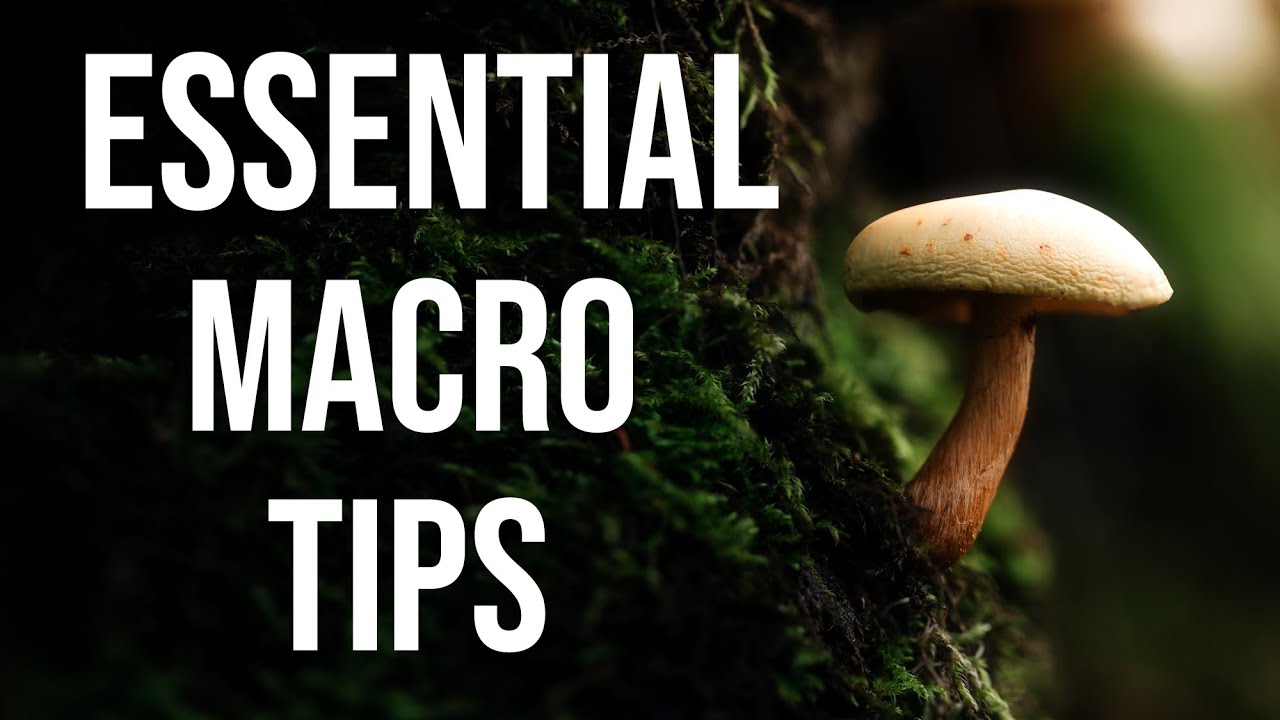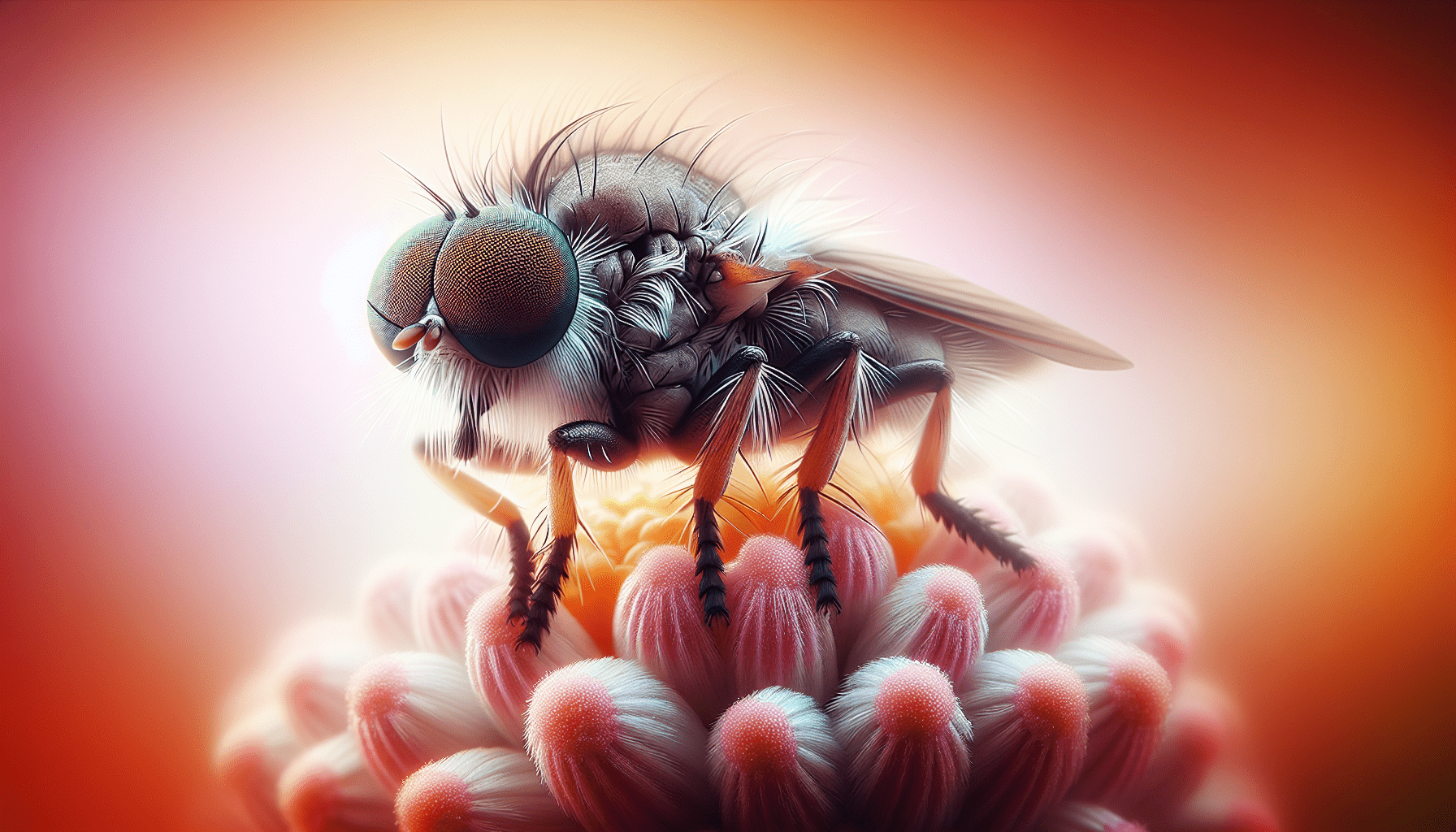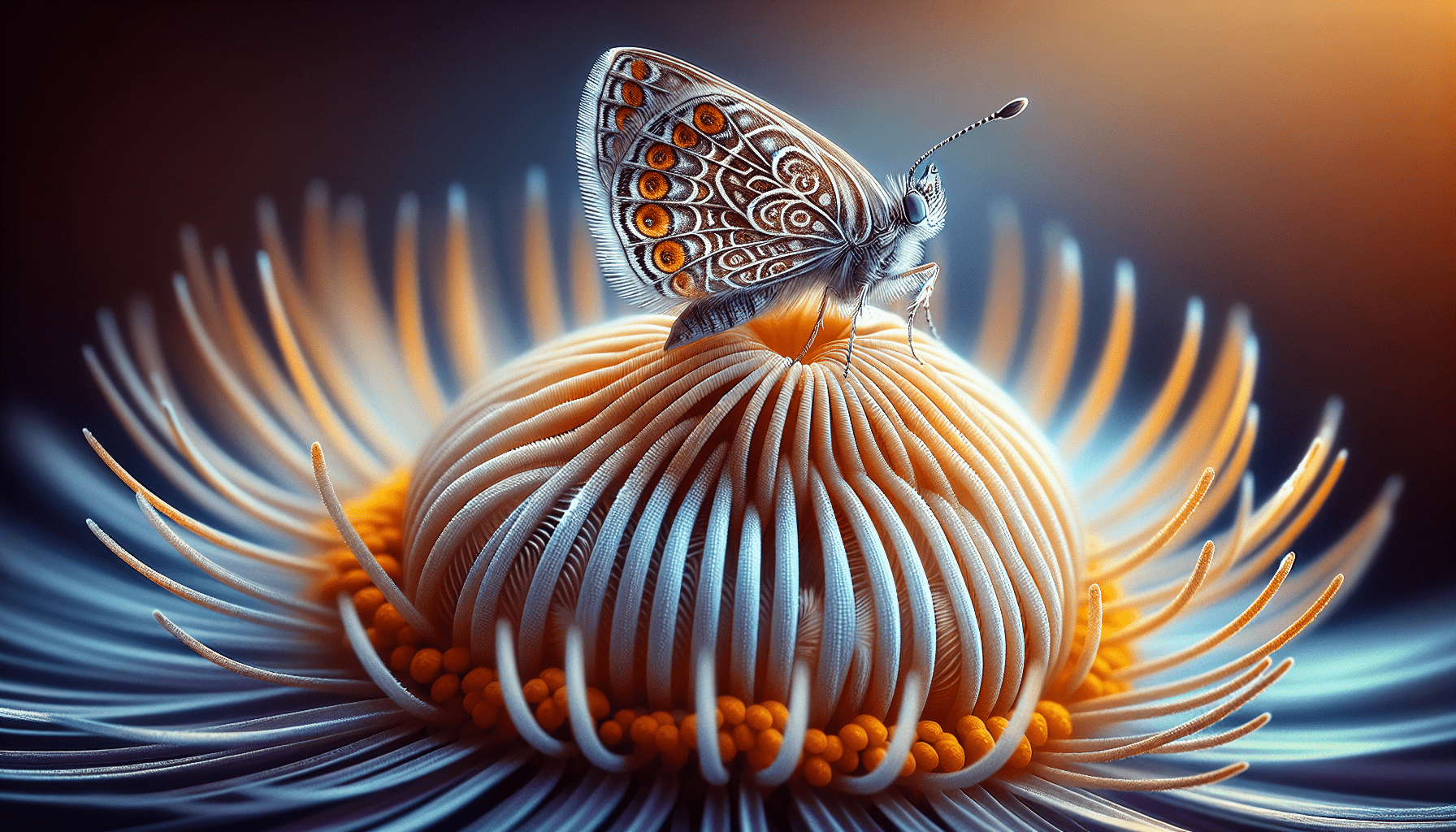As an avid photographer, you will greatly appreciate Andrew Lanxon Photography’s latest tutorial, titled “Essential macro tips I wish I’d known earlier.” This isn’t your typical tutorial that stresses the perfect camera settings or the optimal use of flashlights for macro photography, rather it’s an insight into wider concepts and attitudes that help shape a photographer’s skills. Andrew delves into his personal journey, emphasizing the significance of slowing down, connecting with the world around you for better appreciation, and the practice of critiquing one’s composition before taking a shot. These strategies, according to him, have enabled him to produce pride-worthy images.
This tutorial explores not just the technicalities, but also the human element in photography- focusing on what truly matters while ignoring distractions like the pursuit of social media trends. Andrew revisits the lessons he’s learned in his macro photography journey, from the importance of practicing and refining skills to the value of experimenting outside comfort zones. Andrew speaks out against obsessing over gear, insisting that understanding what to look for and how to capture it is more vital. At the end of the day, the pleasure and creativity derived from photography should take precedence. It’s a highly personal video that encourages dialogue about photography experiences and processes, which makes it much more than just a tutorial.
Slowing Down in Macro Photography
The Importance of Patience in Photography
When the moment arises, it can be tempting to grab your camera and start taking photos immediately. However, rushing through the process can lead to missed shots and unappreciated beauty. Patience is vital in photography. It gives you the time to prepare, compose, and capture your shot in the best way possible. Choosing to slow down allows you to fully immerse yourself in the moment, which ultimately brings more depth and meaning to your images.
Recognizing More Details By Taking Time
In the fast-paced world we live in, we often miss the small details that make our surroundings unique. By taking your time in macro photography, you allow yourself to see and appreciate these small features. Intentionally observing your environment not only provides more potential subject matter for your photos but also enhances your understanding and appreciation of the world around you. Don’t miss out on the incredible tiny natural world around you just because you’re in a hurry.
Enhancing Quality Through Thoughtful and Deliberate Execution
Quality comes from careful thinking and the deliberate act of photography. Instead of snapping photos in haste, take the time to consider your composition, lighting, and angle. By refining your process and being more meticulous, you will start creating more detailed, compelling, and higher-quality images.
Self-Critique in Photography
Assessing One’s Own Composition
Constructive criticism can be a powerful tool for improvement. Before even clicking the shutter button ask yourself, is there something I can refine about this image? How about the angle, or the lighting? These seemingly small considerations add up and significantly impact the overall quality of your photos. Effective self-critique lets you learn from your mistakes, gain new perspectives, and continuously improve your photography style.
Using Critique to Improve Quality of Images
Maintaining a critical eye on your work is vital for continuous improvement. By examining your images and identifying their strengths and weaknesses, you will start to see patterns, understand what works and what doesn’t, and make necessary adjustments. This process boosts your creativity, problem-solving skills, and ultimately, the overall quality of your images.
Conducting Slow, Deliberate Image Composition
Slow and deliberate image composition isn’t about being sluggish. It’s about taking the necessary time to ensure every aspect of the shot – from framing to lightning – is just right. You want to make sure the image’s composition represents what you want to convey. This mindfulness often results in images that feel balanced, thoughtfully crafted, and rich in details that may have been missed in a rushed shot.

This image is property of i.ytimg.com.
The Value of Practice in Macro Photography
Reinforcement of Skills and Knowledge
Just like any other skill, your photography improves over time with practice. Each time you use your camera, you’re reinforcing and refining your skills. This doesn’t mean trying out new techniques every time. Instead, it could be about improving what you already know – like understanding concepts such as aperture and depth of field or how to light a scene properly.
Recognizing Areas of Improvement
With each photo you take, you learn something new. Maybe you noticed that you need to apply more focus points in your shots, or perhaps you’re not yet comfortable with your camera’s settings. Recognizing these areas of improvement helps you focus your practice efforts and continuously grow as a photographer.
Progressing in Skill through Consistent Practice
The more you practice, the more your macro photography will improve. Every shot you take is a chance to progress your skills – from understanding your camera on a much deeper level to trying out new photography styles. Consistent practice, whether at home or in the field, ensures steady improvement and helps prevent skill fade.
Experimenting Outside Your Comfort Zone
Benefits of Experimenting with Different Genres and Styles
Exploring different genres and styles is like running a creative marathon. It pushes your boundaries, brings new perspectives, and helps boost your creativity. While you might be comfortable with macro photography of mushrooms or insects, taking on new photography challenges such as high-speed flash or street and landscape photography, can offer refreshing insights and fresh ideas.
Broadening Skills and Understanding through Exploration
Diversifying your photography practices also means expanding your skill set. You will learn different techniques, compositions, and concepts – all of which contribute to your overall expertise and understanding of the craft. Exploring outside your comfort zone can lead to amazing growth in your macro photography ability, and it might even inspire you to try new styles or subjects.
Capacity for Growth in Macro Photography from Experimentation
There’s always more to learn in photography. It’s a multi-faceted art form that demands constant learning and experimentation. Each new experiment challenges you to think in new ways, use your equipment differently, and understand light, color, and composition from fresh perspectives. Never limit your growth potential by sticking strictly to what’s familiar. Take risks, try new things, and expand your photographic horizons.

Focus Over Gear Obsession
Understanding the Unnecessary Obsession with Equipment
We are often lured into the trend of obsessing over the latest equipment in the market. However, the magic doesn’t come from the gear, but from the photographer. While having professional equipment can indeed make shooting easier, understanding what to look for and how to capture it is far more significant. Remember, some of the best shots remain timeless despite being taken with simple or outdated cameras.
Emphasizing the Essence of Capturing Amazing Shots
While high-quality equipment might make you more efficient, knowing how to use your gear is what will truly make your photos stand out. Capturing an amazing shot goes beyond the frame of your focus. It’s about capturing the emotion and telling a story. If your photos can touch the heart, evoke memories, or bring smiles, you have indeed mastered the essence of photography.
Importance of Comprehension Over Equipment
Understanding the basics of photography is more important than owning expensive gear. Master the fundamentals of lighting, composition, framing, and post-production. Learn how to capture emotion and tell a story through your shots. These skills will allow you to take stunning photos, regardless of the gear you are using.
Enjoying the Craft of Macro Photography
Prioritizing the fun and Creative Aspect of Photography
Photography should be enjoyed, not endured. Views or followers on social media should not dictate how you cherish your craft. Lose yourself in the joy of capturing the beauty around you. Creativity shouldn’t be stifled by the fear of not gaining enough likes or shares. Find joy in the process as much as in the end result.
Discarding Worry Over Social Media Trends or Views
While it’s not bad to have social media goals, they shouldn’t consume your mind and affect your creativity. Photos need not always conform to popular styles just to garner likes and shares – they need to reflect your unique perspective and aesthetic. Do not let the dread of social media performance overshadow your love for the creative process.
Understanding the Significance of Enjoying the Process Over Results
In your pursuit of photography mastery, remember to enjoy the journey. Each frame you capture is a moment encapsulated in time. Each image tells your story. It is all part of a process that is just as meaningful and enjoyable as the final image. Always remember, the most worthwhile photos are those that were taken with love and enjoyed in their making.

Engaging with Viewers
Encouraging Dialogues on Photography Experiences
Engaging with your audience is a great way to learn more about their perspectives and experiences. Encourage dialogue by asking your viewers about their own photography experiences. Their insights could offer you new ideas, constructive feedback, and fresh ways to approach your craft.
Value of Communication and Sharing Processes
Sharing is not just about showcasing your work. It’s also about exchanging knowledge, techniques, and ideas. Communicating with other photography enthusiasts fosters valuable relationships and collaborations, expands your knowledge and broadens your understanding of different styles and techniques.
Improving Photographic Vision through Shared Thoughts and Ideas
Your interactions with viewers and fellow photographers can contribute to your own artistic growth. Shared thoughts and ideas will enhance your photographic vision by offering new perspectives, stimulating creativity and encouraging continuous learning and improvement.
Learning how to Best Utilize Light
Identifying the Best Sources and Types of Light
In photography, understanding light is key. Light influences the mood, texture and tones of your image. Identifying the best light sources and knowing when to use them will allow you to add depth to your shots and create impressive effects. This could be the soft, warm light of the golden hour or the harsh, contrasty midday light.
Understanding the Direction of Light and its Effects
The direction of light affects your subject’s appearance. Knowing how different light directions – whether it’s backlit, front-lit, or side-lit – will affect your photos can help you create the desired mood in your shots. Learning how to use light to your advantage, rather than fighting against it, is an essential skill in photography.
Leveraging natural light in a variety of settings
Knowing how to use natural light effectively allows you to create stunning photos without relying on artificial lighting. By observing and understanding natural light, you also learn how to adjust your camera settings to capture your subject in the best way possible, whether you’re in a forest path, a brightly lit field, or the shade of a tree.
Making the Most of Specific Macros Settings
Tips for Using High ISO Settings
High ISO settings allow you to capture details even in low light conditions. However, it’s important to use them carefully as high ISO can also lead to noisy or grainy images. It takes practice to find the right balance, but with time you’ll get better at knowing when to crank up the ISO for the best results.
Understanding When to use Aperture Priority Mode
In macro photography, controlling the depth of field is crucial. Aperture Priority mode gives you control over the aperture and automatically sets the shutter speed. This feature is especially useful when you want to isolate your subject from the background or when you need to ensure that a particular area of your subject is in focus.
Effective use of Manual Focus
Sometimes, your camera’s autofocus just can’t quite catch the detail you’re aiming for – particularly in macro photography. In such cases, knowing how to use manual focus effectively can ensure you capture the crisp, detailed shots you’re aiming for. It’s a skill that can significantly enhance your ability to capture macro images.
Conclusion
Summary of Main Points Covered
In conclusion, macro photography is not just about capturing close-up shots, but about understanding and appreciating the small details around us. It’s about taking the time to patiently compose and critique each shot, learning and growing through practice and experimentation, shifting focus from gear obsession to comprehension, and enjoying the creative process. Engaging with our audiences, mastering light utilization, and making the most out of our camera settings are all part of this enriching journey.
Final Thoughts on Approaching Macro Photography
Balancing technical know-how with creativity, curiosity and patience can lead to some truly stunning macro photographs. But as important as it is to master your craft, remember to enjoy the process. Photography isn’t just about capturing an image, but also about the journey of exploration, learning, and personal growth.
Motivation for Continuous Learning and Practice
Every person, every moment, and every subject offers something new to learn in photography. Continuous learning and regular practice will refine your macro photography skills and allow you to consistently capture the magic in the world that others might miss. Keep challenging yourself, explore new scenes and subjects, and push your creative boundaries. There’s always a story to tell, and your perspective is unique. Embrace it and share it with the world.
